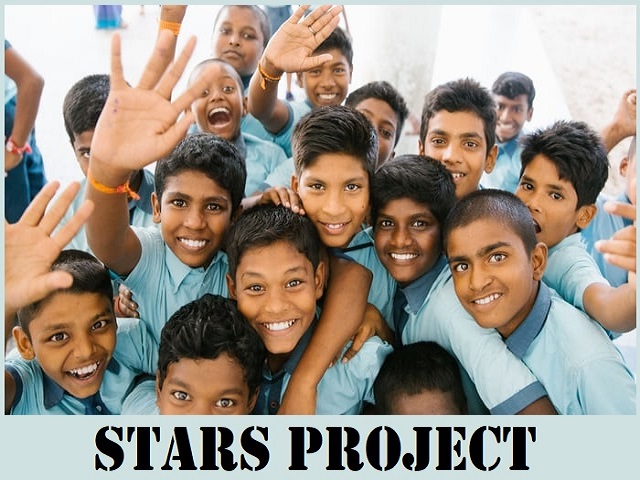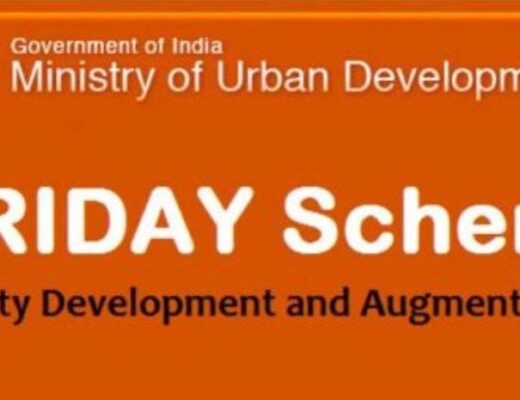Contents
What is STARS project?
It stands for Strengthening Teaching-Learning and Results for States Program.
STARS project would be executed as a new Centrally Sponsored plan under the Department of School Education and Literacy, Ministry of Education.
It is a project to enhance the governance and quality of school education in six Indian states.
- Six states are- Rajasthan, Kerala, Odisha, Madhya Pradesh, Maharashtra, and Himachal Pradesh.
- Over 10 million teachers and some 250 million students (between the age of 6 and 17) in 1.5 million schools will profit from the scheme.
Reform initiatives under the project include
- Concentrating more directly on the delivery of education services at the sub district, state, and district levels by offering customized local-level solutions towards school improvement.
- Addressing demands from stakeholders, especially parents, for greater inclusion and accountability by building great data to assess the quality of learning; giving individual attention to students from unsafe section.
- Equipping faculty to carry on this transformation by recognizing that teachers are central to attain good learning outcomes.
- Invest more in developing nation human capital needs by strengthening foundational learning for kids in classes 1 to 3 and prepare them with the language, cognitive, and socio-behavioural skills to connect future labor market needs.
Unique components of the project
Contingency Emergency Response Component (CERC):
The project includes a CERC under the National Component which would qualify it to be more responsive to any health, natural, and man-made disasters.
- It will support the gov. respond to circumstances leading to loss of learning such as infrastructure damage/school closures, poor facilities and utilize technology for facilitating remote learning etc.
- The Contingency Emergency Response Component would facilitate the use of streamlined financing request procedures and rapid re-categorization of financing.
PARAKH:
A major element of the project is the initiation of PARAKH as a National Assessment Centre.
- It will also guide standardized testing to monitor learning outcomes at the national and state levels, according to the NEP.
STARS Project
- This project is a centrally sponsored program that seeks to build up the school education system.
- The agreement has been signed with a goal of improving the quality and governance of school education in six states of India.
- The 6 Indian states include- Odisha, Rajasthan, Himachal Pradesh, Madhya Pradesh, Maharashtra, and Kerala.
- Coming from the 1.5 million schools, this project will be profiting approx 250 million students in the age group of 6 to 17 years.
- Apart from the students, this Star project will also profit 10 million teachers across the six states.
- The project was introduced with the goal of strengthening the public-school education.
- It also covers India’s aim of “Education for All”.
- This Project carry forward the vision of the National Education Policy 2020 that forecast the impartial education for all.
- This project will be executed through the Samagra Shiksha Abhiyan, the flagship central yojana.
- It will support enhance learning assessment systems, facilitate school-to-work transition, strengthen classroom remediation and instruction, and decentralized management and strengthen governance.
- Some 250 million students (between the age of 6 and 17) in 1.5 million schools and over 10 million teachers will profit from the STARS project.
- STARS will cover nation renewed focus on addressing the ‘learning outcome’ challenge and support students better prepare for the future jobs– through a sequence of reform initiatives.
BENEFITS OF THE PROJECT
- Customized local-level Solutions: This project will concentrate on direct delivery of education services at the state, district & sub-district levels by providing enhanced customized local-level solutions in improving schools.
- Address specific demands: This project will address demands from parents and stakeholders, for offering good quality education.
- Attention to students from unsafe sections: The project will give great attention to students from endangered sections. As per reports, more than 52% of kids in the state-run schools in the six listed states are from in danger sections– ST (Scheduled Tribe), SC (Scheduled Caste) and other minority communities.
- Changing job trend: The STARS project will support the students in keeping up with the rapid changing requirements of the job pond.
- Equipping teachers: In the technology-driven era, the project will also equip the teachers to attain a better learning outcome as they are play a crucial role in offering quality education. The project will carry out needs-based training for faculty.
Funding to the Project
- The total cost of this project is Rs 5718 crore.
- The world bank has offering financial support worth $500 million which stands around Rs. 3700 crores.
- This loan has been offered by IBRD which is the lending arm of the World Bank.
- The world bank has offering the final maturity of 17.5 years for the $500 million along with a grace time of 5 years.
Background
This project was accepted by the Union Cabinet under NEP 2020 in October 2020.
International Bank for Reconstruction and Development (IBRD)
It is an international financial institution. It was set up in the year 1944. The International Bank for Reconstruction and Development is headquartered in Washington, D.C., United States. International Bank for Reconstruction and Development is the added quality arm of World Bank Group. It provides loans to the middle-income developing nations.
Reform initiatives under Project
- Focus more straight way on the delivery of education services at the sub-district, state, and district levels by offering customized local-level solutions towards school improvement.
- Invest more in developing nation human capital needs by building up foundational learning for kids in classes 1 to 3 and prepare them with the language skills to meet future labor market requirements.
Issues with the STAR project
- First, it break down to address the fundamental capacity issues: major vacancies across the education system from DIETs, block education and district offices, to teachers in schools, persist unaddressed.
- Without motivated and capable faculty, training and teacher education cannot be expected to enhance.
- Second, the Bank avoids that decentralizing decision-making needs the devolution of real decision-making power and funds.
- Greater decentralization can permit accountability to flow to the individuals rather than to supervising officers.
- It needs not just investment in the capacity of the front-line bureaucracy but also in enhancing their discretionary powers while promoting social accountability.




